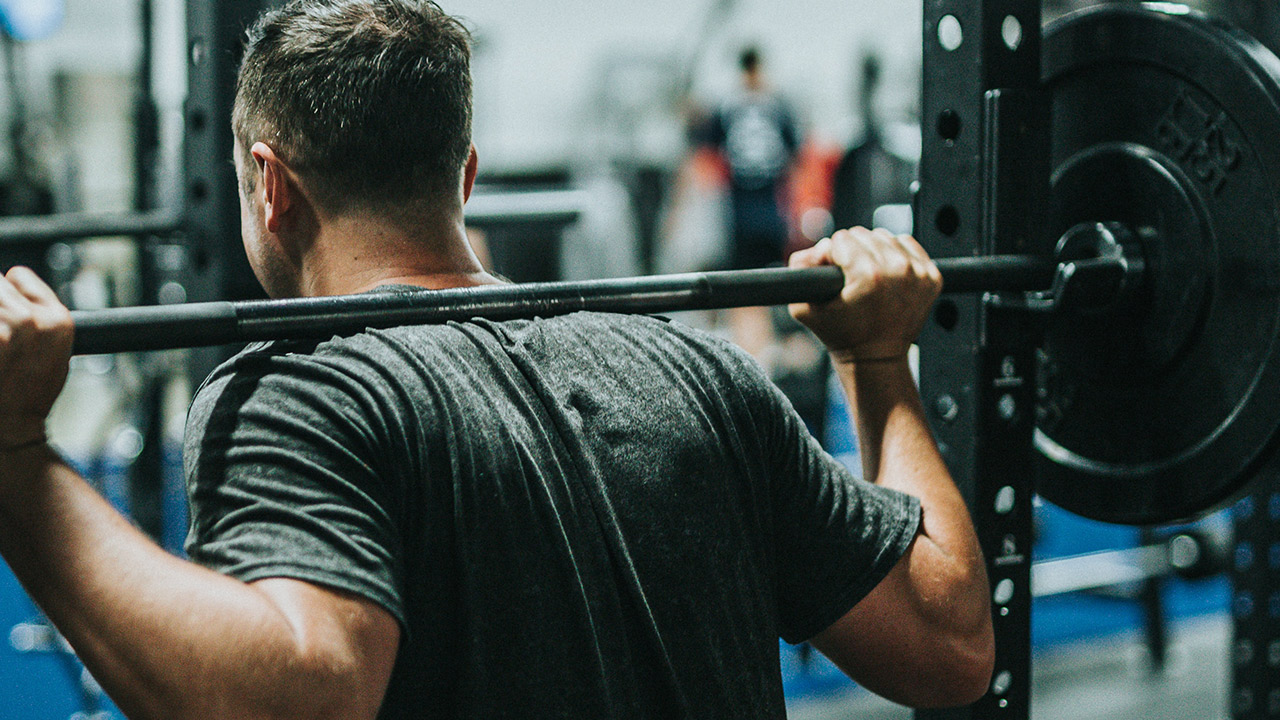Staying fit and healthy has always been a priority for many people, but the recent pandemic has made it more challenging than ever. With gyms closed and limited access to trainers and coaches, many have turned to online fitness coaching as a viable solution.
The Rise of Online Fitness Coaching in Australia
Online fitness coaching has been rising in popularity over the past decade, with many people choosing this option due to its accessibility, flexibility, and convenience. Australia is no exception, with a growing number of online fitness coaches offering their services across the country.
One of the main reasons for the rise of online fitness coaching is the increased availability of technology. With the widespread use of smartphones, laptops, and tablets, it has become easier than ever to connect with a coach online and receive personalized fitness guidance.
Another factor contributing to the popularity of online coaching is the variety of options available. Clients can choose from a range of coaches with different specializations and coaching styles, allowing them to find a coach that suits their individual needs and preferences.
The Impact of the Pandemic on the Fitness Industry
The COVID-19 pandemic has greatly affected the fitness industry, with gyms and studios temporarily closing down and many traditional training methods becoming unavailable. As a result, online fitness coaching has become a more prominent option as people search for ways to stay active and healthy from home.
Many people have found that online coaching offers a more flexible and adaptable approach to fitness, as coaches can create personalized workout plans that can be done at home with minimal equipment. This has been especially important during the pandemic, as people have had to adjust to working out in limited spaces with limited equipment.
The Benefits of Online Coaching for Clients and Coaches
The benefits of online fitness coaching are numerous. For clients, it allows them to access professional coaching from the comfort of their own home, at whatever time suits them best. This is particularly beneficial for those with busy schedules or who live in remote areas without access to local fitness facilities.
Online coaching also enables coaches to provide more personalized and individualized attention to their clients. With the use of video calls and messaging apps, coaches can communicate with their clients in real-time, providing feedback and support throughout their fitness journey.
Furthermore, online coaching allows coaches to take on more clients from across the country, without being limited by geographical boundaries. This has opened up new opportunities for coaches to grow their businesses and reach a wider audience.
Overall, the rise of online fitness coaching in Australia has been a positive development for both clients and coaches. With its accessibility, flexibility, and convenience, it offers a convenient and effective way for people to achieve their fitness goals.
Meet Australia’s Top Online Fitness Coaches
Australia is home to some of the best online fitness coaches in the world. Here are five coaches who stand out from the crowd:
Coach 1: The Strength and Conditioning Specialist
This coach specializes in helping clients improve their strength and endurance through personalized strength and conditioning routines. They work with each client to develop a tailored plan that will help them reach their fitness goals, whether that be building muscle or increasing their overall fitness level.
With a focus on strength and conditioning, this coach emphasizes the importance of proper form and technique to prevent injury and ensure maximum results. They also stay up-to-date on the latest research and techniques in the field, allowing them to provide their clients with the most effective and efficient workouts possible.
Whether you’re a beginner or an experienced athlete, this coach can help you take your fitness to the next level.
Coach 2: The Functional Fitness Guru
With a focus on functional fitness, this coach helps clients improve their overall movement, flexibility, and strength through a combination of bodyweight exercises, resistance training, and mobility work. Their approach aims to help clients build a foundation of functional fitness that they can carry through all areas of their life.
This coach believes that functional fitness is essential for everyday life, and their workouts reflect this philosophy. They incorporate exercises that mimic real-life movements, such as squats, lunges, and push-ups, to help clients improve their strength and mobility in a practical way.
If you’re looking to improve your overall fitness and mobility, this coach can help you achieve your goals.
Coach 3: The Mind-Body Wellness Advocate
This coach emphasizes the importance of a holistic approach to fitness. In addition to customized workout plans, they also incorporate mindfulness and mental health practices to help clients achieve balance and overall well-being. Their ultimate goal is to help clients achieve a more balanced and healthy lifestyle.
With a focus on mind-body wellness, this coach believes that fitness is about more than just physical strength. They work with clients to develop healthy habits that promote overall wellness, such as meditation, stress management, and healthy eating.
If you’re looking to improve your mental and physical health, this coach can help you achieve a more balanced and fulfilling life.
Coach 4: The Weight Loss and Nutrition Expert
For those looking to lose weight and improve their overall health, this coach provides a comprehensive approach that includes both personalized workout plans and nutrition coaching. With a focus on sustainable lifestyle habits, they help clients achieve long-term weight loss and health goals.
This coach understands that weight loss is about more than just calorie counting and restrictive diets. They work with clients to develop healthy habits that promote sustainable weight loss, such as meal planning, portion control, and healthy snacking.
If you’re looking to lose weight and improve your overall health, this coach can help you achieve your goals in a healthy and sustainable way.
Coach 5: The Sports Performance Coach
For athletes looking to improve their performance and take their training to the next level, this coach provides tailored training programs that focus on improving specific skills and abilities. They work with each client to develop a program that will not only improve their performance in their chosen sport but also help them avoid injury and stay healthy.
This coach understands the unique demands of different sports and works with clients to develop training programs that address their specific needs. They incorporate exercises that improve speed, agility, power, and endurance, as well as injury prevention techniques.
If you’re an athlete looking to improve your performance and stay healthy, this coach can help you achieve your goals and reach your full potential.
Training Techniques and Philosophies
When it comes to fitness coaches, there are a variety of training techniques and philosophies that they use to help their clients achieve their fitness goals. Each coach has their own unique approach, but there are some common themes that run throughout.
Customized Workout Plans for Individual Needs
One of the most important aspects of any fitness routine is a personalized workout plan that takes into account each client’s individual needs, goals, and fitness level. This approach ensures that each workout is effective and tailored to the client’s specific needs. For example, a client with a knee injury may need modifications to their workout plan to avoid aggravating the injury.
Coach Smith, who specializes in working with seniors, emphasizes the importance of a customized workout plan that takes into account the unique needs and limitations of older adults. He works with each client to create a plan that improves their strength, balance, and flexibility, while also taking into account any chronic conditions or injuries they may have.
The Importance of Functional Training
Functional training is another common thread among many fitness coaches. This type of training focuses on exercises that mimic real-life movements, such as squatting, lifting, and twisting. By improving overall movement quality and strength, functional training can help clients perform better in all areas of their life, from sports to everyday activities.
Coach Rodriguez, who works with athletes, emphasizes the importance of functional training to improve athletic performance. By incorporating exercises that mimic the specific movements required in their sport, athletes can improve their strength, speed, and agility.
Incorporating Mindfulness and Mental Health into Fitness Routines
Many coaches recognize the important role that mindfulness and mental health play in overall well-being. By incorporating practices such as meditation, deep breathing, and visualization into fitness routines, clients can achieve a more balanced and holistic approach to health.
Coach Johnson, who specializes in working with clients who have anxiety and depression, incorporates mindfulness practices into their workouts to help them manage their symptoms. By focusing on the present moment and their breath, clients can reduce stress and improve their mental health.
The Role of Nutrition in Achieving Fitness Goals
Each coach recognizes the vital role that nutrition plays in achieving fitness goals. For many, nutrition coaching is just as important as customized workout plans, as it ensures that clients are eating in a way that supports their fitness goals and overall health.
Coach Lee, who specializes in working with clients who want to lose weight, emphasizes the importance of nutrition coaching to help them reach their goals. She works with each client to create a meal plan that supports their fitness goals, while also taking into account their food preferences and lifestyle.
Overall, each coach has their own unique approach to fitness, but they all share a commitment to helping their clients achieve their goals in a way that is effective, safe, and sustainable.
Tips for Choosing the Right Online Fitness Coach
Staying fit and healthy is a top priority for many people, and with the rise of online fitness coaches, it’s easier than ever to get the guidance and support you need to reach your fitness goals. However, with so many options available, it can be overwhelming to know where to start. Here are some tips to consider when choosing the right coach for you:
Assessing Your Fitness Goals and Needs
The first step in choosing the right online fitness coach is to assess your own fitness goals and needs. Are you looking to lose weight, build muscle, or improve your overall fitness level? Do you have any specific health conditions or injuries that need to be taken into consideration? By answering these questions, you can narrow down your search to coaches who specialize in the areas you want to improve in.
It’s also important to consider your own personality and learning style. Do you prefer a coach who is tough and demanding, or one who is more nurturing and supportive? Do you learn best through visual demonstrations or written instructions? These are all important factors to consider when choosing a coach who will be a good fit for you.
Researching Coach Credentials and Experience
Once you have a clear idea of your fitness goals and needs, it’s time to start researching potential coaches. Make sure you choose a coach with the necessary credentials and experience to provide quality coaching. Look for coaches who have certifications from reputable organizations, such as the National Academy of Sports Medicine or the American Council on Exercise. It’s also a good idea to choose a coach who has experience working with clients who have similar goals and needs as you.
Reading Client Testimonials and Reviews
Reading client testimonials and reviews can provide valuable insight into a coach’s coaching style, communication skills, and overall effectiveness. Look for coaches who have a track record of success with their clients, and who are willing to provide references upon request. You can also ask friends or family members for recommendations, or check online forums and social media groups for feedback from other clients.
Comparing Pricing and Packages
Finally, make sure you compare pricing and packages before choosing a coach. While price shouldn’t be the only factor you consider, it is important to find a coach that fits within your budget. Look for coaches who offer flexible payment options, such as monthly or per-session rates, and who provide clear information about what is included in their coaching packages.
By following these tips, you can find the right online fitness coach to help you achieve your fitness goals and improve your overall health and well-being.
Conclusion
Online fitness coaching is a growing trend in Australia, and for good reason. With the right coach, clients can improve their overall health and achieve their fitness goals from the comfort of their own home. By considering the tips above and researching coaches thoroughly, you can find the perfect online fitness coach to help you achieve your goals.










































































